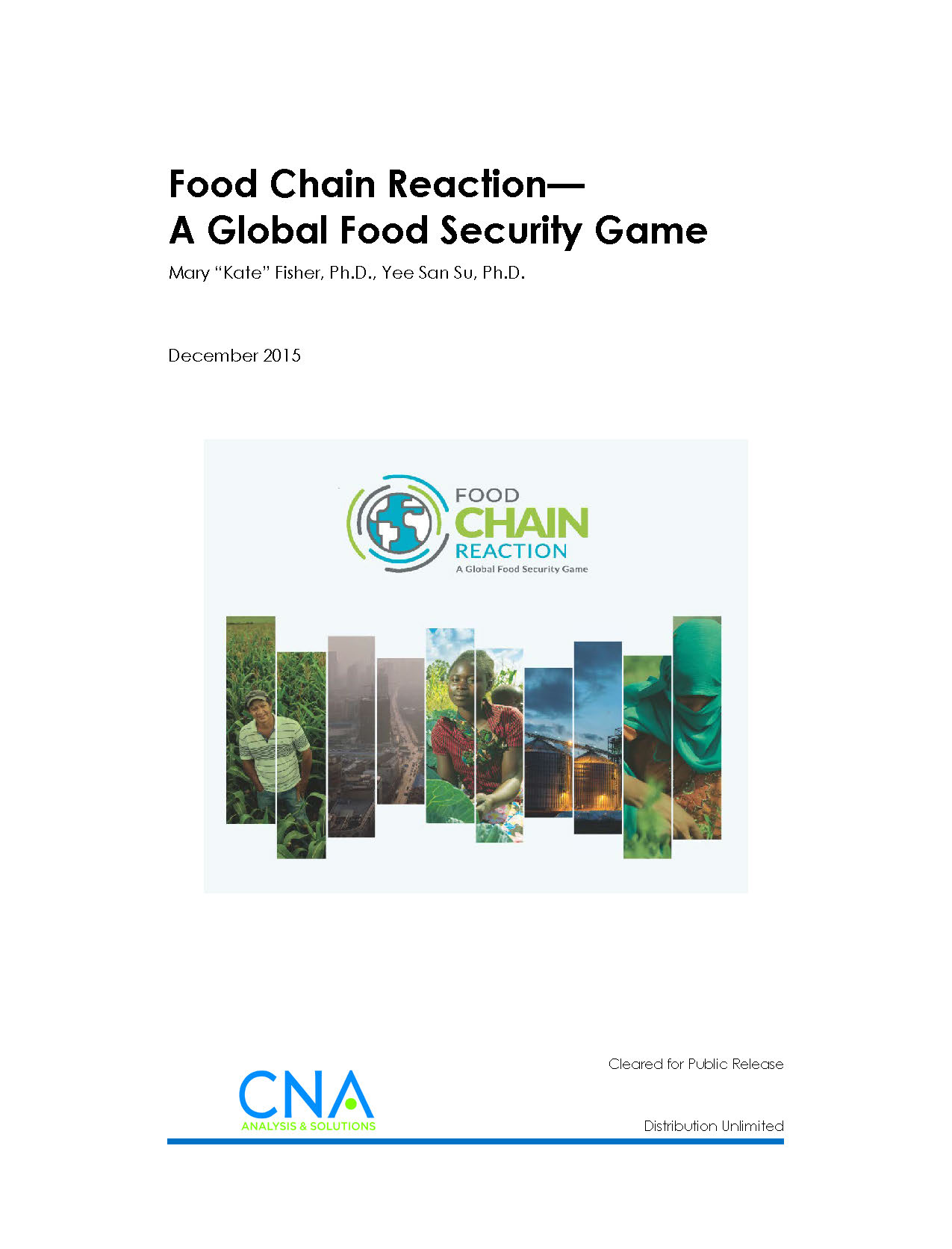Background
The global food system is heavily networked and complex, making it vulnerable to a variety of risks. In 2007 and 2008, the world watched as a modern-era food crisis arose from the complex interplay of several drivers: droughts in major grain- and cereal-producing regions, increased biofuel production consuming grain supplies, and a range of evolving structural problems in the global food supply chain. Disruptions affected developed and developing countries alike, creating political and economic instability, and contributing to social unrest in certain areas. The crisis highlighted the critical importance of better understanding the interdependencies and cascading effects of decisions made throughout the global food system and how the effects of climate change may exacerbate such challenges.
Recognizing the need to address threats to food security, World Wildlife Fund, the Center for American Progress, Cargill, and Mars (hereafter referred to as the sponsors) came together to develop a game exploring a range of questions including: Will increasing levels of stress on the global food system disrupt markets? Will individual nations become isolationist—or cooperate—to restore stability? Will global leaders identify new and innovative approaches to balance short- and long-run considerations? CNA, in collaboration with the sponsors, designed and conducted a policy decision-making exercise with 65 international thought leaders to better understand the global impacts of and responses to deepening global food system disruptions.
Game Design
Food Chain Reaction—A Global Food Security Game was held November 9–10, 2015 in Washington, DC. Players with considerable influence and deep expertise in agriculture, trade and economics, climate and the environment, diplomacy, and security represented national and international governing bodies and organizations and the private sector. During the game, players encountered a decade marked by food price and supply swings amidst burgeoning population growth, rapid urbanization, severe weather events, and social unrest. Recognizing their influence over global conditions, players took action—and, in the process, shaped the world.
The game’s dynamic design allowed players to experience a chain reaction of consequences resulting from their choices.
The game was set between the years 2020 and 2030, a period that was near enough to be familiar, but distant enough to allow players to focus beyond current policy debates. The longitudinal nature of the game presented players with the opportunity to realize the impacts of their choices in the context of the environment-food- stability nexus. The players were organized into eight teams. Six of the teams represented Brazil, China, the European Union (EU), India, the United States, and Continental Africa. The seventh team represented Business and Investors, and the eighth team represented Multilateral Institutions (e.g., World Bank, United Nations, Non-Governmental Organizations). The interests of and events in other key regions, such as the Middle East and Central Asia, were represented within the underlying background scenario and through events that emerged as the game proceeded.
Prior to game conduct, players received background information relevant to each team’s unique geographic and climatic situation, national security issues, and economic and political status. Based on this information and the evolving state of the world—driven to a large extent by their own actions—players confronted a variety of significant decisions and tradeoffs. Teams were afforded the ability to employ national, bilateral, and/or broadly cooperative approaches to addressing the world’s growing food security challenges. Based on team actions and external stresses, a panel of experts (the “Adjudication Cell”), relying on qualitative and quantitative judgment, updated the state of the world to illustrate for players the results of their combined actions. The game proceeded in this manner over four rounds until the scenario advanced roughly ten years.
Download reportDistribution unlimited.
Details
- Pages: 47
- Document Number: IQR-2015-U-012427
- Publication Date: 12/1/2015
